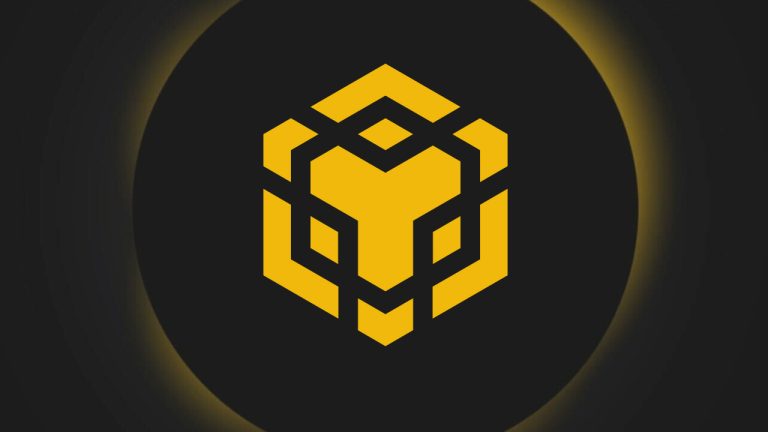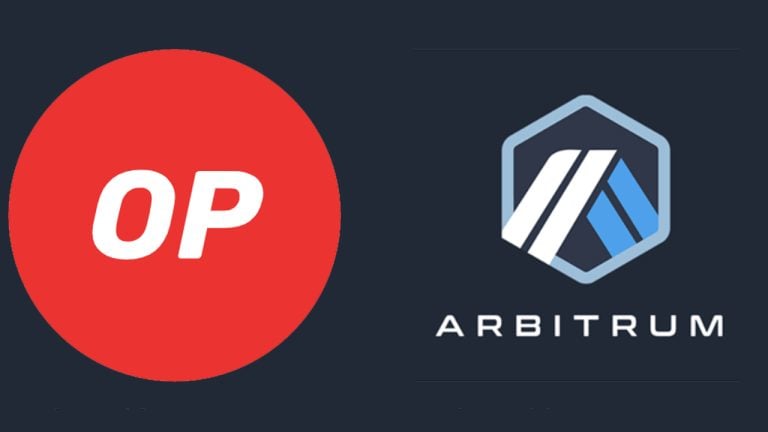 On Thursday, the team behind BNB Chain introduced a novel Rollup-as-a-Service (RaaS) offering for the development of layer two blockchains (L2s) atop the BNB Chain. The team detailed that the service equips sizable decentralized applications (dapps), enterprises, and the BNB Chain with the essential technological framework required for launching specific L2s on BNB Smart Chain […]
On Thursday, the team behind BNB Chain introduced a novel Rollup-as-a-Service (RaaS) offering for the development of layer two blockchains (L2s) atop the BNB Chain. The team detailed that the service equips sizable decentralized applications (dapps), enterprises, and the BNB Chain with the essential technological framework required for launching specific L2s on BNB Smart Chain […]
A brand new altcoin surged by more than 96% over the last three days after its mainnet went live earlier this week. Dymension (DYM) is a layer-1 blockchain that aims to serve as a network for “RollApps,” which the project defines as fast modular chains that work for games, decentralized finance (DeFi) protocols and non-fungible […]
The post New Modular Blockchain Altcoin Surges More Than 96% Just Two Days After Mainnet Launch appeared first on The Daily Hodl.

Consensys zkEVM Linea head Nicolas Liochon says speed and execution will continue to increase as it tweaks its Ethereum layer 2 scaling solution.
Zero-knowledge proof (ZK-proofs) solutions have proved critical in helping scale the Ethereum ecosystem, but proto-danksharding is expected to drastically reduce the cost of roll ups according to Consensys’ zkEVM Linea head Nicolas Liochon.
Speaking exclusively to Cointelegraph Magazine editor Andrew Fenton during Korea Blockchain Week, Liochon estimated that proto-danksharding could further reduce rollup costs by 10 times.
Proto-danksharding, also known by its improvement proposal identifier EIP-4844, is aimed at reducing the cost for rollups, which typically batch transactions and data off-chain and submit computational proof to the Ethereum blockchain.
The Ethereum Foundation is yet to nail down an expected launch data for proto-danksharding but development and testing is still ongoing.
As Liochon explained, Linea delivers 15 times cheaper transactions compared to those made on Ethereum’s layer one, but rollups are still limited by the fact that transactions are posted in calldata in Ethereum blocks.
According to Ethereum’s documentation, rollups are still expensive in terms of their potential because calldata is processed by all Ethereum nodes and the data is stored on chain indefinitely despite the fact that the data only needs to be available for short period.
EIP-4844 will introduce data blocks that can be sent and attached to blocks. The data stored in blobs is not accessible to the Ethereum Virtual Machine and will be deleted after a certain time period - which is touted to drastically reduce transaction costs.
“In reality, the cost of rollups is down to data availability. We are writing all the data to layer one which is why we have exactly the same security. But it’s expensive, it represents 95% of the cost.”
Liochon said that Linea’s prover, which essentially handles the off-chain computation that verifies, bundles and then creates a cryptographic proof of the combined transactions, only represents a fifth of the cost.
This highlights the major hurdle in making ZK-rollups the go-to scaling solution for the Ethereum ecosystem as opposed to other solutions like Optimistic rollups.
Liochon also said that Linea aims to be a general use ZK-rollup that will be used for a variety of decentralized applications and solutions within the Ethereum ecosystem.
"We are a generic rollup. We don't want to have a specific use case or specific domain. It's quite important to support all type of applications, including DeFi, gaming and social."
As Cointelegraph previously reported, Consensys has completed the launch of Linea in Aug. 2023, having onboarding over 150 partners and bridging more than $26 million in ETH.
Magazine: Here’s how Ethereum’s ZK-rollups can become interoperable

Transactions on Optimism recently eclipsed the Arbitrum network, but do the project’s fundamentals support a sustainable growth trajectory?
Optimism (OP) is a Layer 2 scaling solution, which operates as a separate blockchain built on top of Ethereum. Despite having a smaller total value locked (TVL) than its rivals, Optimism may still have the potential to thrive in the increasingly competitive DeFi landscape.
Being one of the pioneers in the DeF space, Optimism initially gained an initial but had to contend with fierce competition. The project has been trailing behind other scaling solutions in terms of daily transactions for the past six months. However, in late July, the situation changed as Optimism finally overtook its main competitor Arbitrum and is showing signs of increasing demand from users.
The increase in Layer 2 activity on Ethereum has been significant, surpassing mainnet activity by more than four times, according to data from L2beat. Various solutions have emerged to address Ethereum's scalability challenges and each Layer 2 project focuses on different aspects such as privacy, specific decentralized applications and NFT marketplaces.
Consequently, the leaderboard of transactions and volumes constantly fluctuates based on demand, and each solution comes with its own advantages and drawbacks.
Optimism operates using rollups, bundling all transactions into a single transaction to be executed on the base layer, inheriting all security features from Ethereum. The philosophy behind Optimism assumes that all transactions are valid unless challenged and proven otherwise, allowing for cost-effective and fast transactions for users.

While Optimism and Arbitrum (ARB) rely on rollups, the core difference lies in Arbitrum's centralized approach where a single entity (sequencer) is responsible for submitting fraud proof. On Optimism, anyone can submit them.

Among the Layer-2 competitors, Optimism has been the standout performer since July 20, experiencing a 47% growth in daily transactions. This growth has enabled Optimism to surpass its competitor Arbitrum in daily transactions for the first time in 6 months.
Furthermore, the Optimism protocol has witnessed a surge in daily active addresses, with a 27.6% increase in 30 days, while Arbitrum's activity declined by 7.5%.

This trend indicates a potential shift in dominance, although drawing conclusions prematurely would be unwise. Arbitrum's main advantage lies in its much larger total value locked (TVL) compared to Optimism.
According to DefiLlama, Arbitrum currently holds a significant TVL of $2.35 billion, whereas Optimism's TVL is comparatively lower at $920 million. Arbitrum's dominance is especially evident in the decentralized finance (DeFi) applications it shares with Optimism, such as Uniswap and AAVE. Additionally, Arbitrum boasts an impressive $500 million TVL in the derivatives exchange GMX.
Two of the main reasons for higher demand on Optimism are increased use from Coinbase and Worldcoin. The project is also on track to implement important privacy mechanisms that could create another use case.
A pivotal moment for Optimism came with the launch of Coinbase's sandbox on July 21, providing developers with a test environment to build and deploy new applications on this Layer 2 solution. This initiative incentivizes the creation of new tools, applications, and protocols, fostering growth and innovation.
One of the projects utilizing Optimism as a scaling solution is Worldcoin, which has been gaining substantial attention. The token airdrop on July 26 further boosted activity on Optimism after supporting Uniswap on the Optimism mainnet. Worldcoin has also deployed most of its Safe wallets on Optimism. This adoption has contributed significantly to the daily activity on the network, accounting for around 40%.

Related: Worldcoin stuck after 70% drop from peak — More downside for WLD price?
Optimism's ecosystem is set to undergo several developments, including two proposals by O(1) Labs and RISC Zero to implement zero-knowledge proof systems. This move will provide the network with its own ZKP layers, akin to developments on Polygon (MATIC) and ZKSync.
The growth in active addresses on Optimism is a positive indicator for the network's success and the successful launch of the Worldcoin project marked a milestone for this scaling solution.
The surge in daily active addresses is also promising, signifying the network's continuous growth and potential opportunities with the successful implementation of its privacy solutions.
This article is for general information purposes and is not intended to be and should not be taken as legal or investment advice. The views, thoughts, and opinions expressed here are the author’s alone and do not necessarily reflect or represent the views and opinions of Cointelegraph.

Avail launched a bridge to transmit data availability attestations to Ethereum, potentially allowing for lower fees on some layer 2s.
Blockchain network Avail has launched a testnet data availability bridge to Ethereum, according to a July 7 announcement. Once testing is completed, the bridge will allow developers to easily create “validiums” or low-cost layer 2s that do not store full transaction data on Ethereum, the announcement stated.
Avail was originally created by Polygon Labs, but was spun off as an independent project in March. Polygon’s co-founder, Anurag Arjun, is also the founder of Avail.

Layer-2 rollup networks like Optimism, Arbitrum, Polygon zkEVM, and zkSync Era lower transaction fees by batching transactions into compressed “rollups” and periodically adding them to the base layer. However, because these networks must write all the transactions to the base layer, they often have higher transaction fees than layer-1 competitors.
To get around this problem, some networks have opted to write only the validation proofs of each transaction to the base layer, while storing the full transaction data off-chain. This produces a type of network called a “validium.” For example, StarkEx features a validium mode that stores data with a data availability committee (DAC) instead of on Ethereum. Polygon proof-of-stake may become a validium that stores its data on a proof-of-stake chain in 2024.
Related: Starknet’s Quantum Leap hits testnet with TPS reaching ‘triple figures’
According to the announcement, the new bridge allows developers to create custom validiums quickly and easily by storing their transaction data on the Avail network, eliminating the need to create their own DAC or proof-of-stake data availability network. When a user tries to withdraw cryptocurrency from layer 2 back to the base layer of Ethereum, the Avail bridge will transmit an attestation that the data is available on Avail, allowing the withdrawal to occur.
“Today’s launch of the Data Availability attestation bridge marks a major advancement in our mission to optimize blockchain scalability and efficiency,” said Arjun. “By enabling rollup constructions to run in validium, optimistic chains, and volition modes, we are not only reducing costs but also paving the way for a more inclusive and efficient layer-2 and layer-3 ecosystem.”
Arjun previously told Cointelegraph that data availability solutions would become essential to the Web3 space as zero-knowledge proof rollups are more widely used.

The Binance-founded blockchain has introduced a new layer-2 chain opBNB, though some suggest there are other ways to scale the network.
Binance-founded layer-1 blockchain BNB Chain has introduced a new layer-2 chain that it hopes will address its “scalability challenge.”
On June 19, BNB Chain unveiled opBNB, which has launched as a testnet. The new layer-2 scaling solution is based on the Optimism OP Stack, which it says will add additional security and scalability to the Binance blockchain network.
The system is an Ethereum Virtual Machine (EVM) compatible layer-2 chain, which means it works with Ethereum-based smart contracts, networks and ERC-20 token standards.
Blockchains are often plagued by network congestion and high fees during times of increased network demand. BNB Chain currently claims around 2,000 transactions per second with transaction costs of around $0.10.
According to the announcement, opBNB can support over 4,000 transfer transactions per second at an average transaction cost lower than $0.005.
As blockchain technology continues to evolve, scalability remains a critical challenge.
— BNB Chain (@BNBCHAIN) June 19, 2023
But fear not! Enter opBNB, a game-changing Layer 2 scaling solution designed to overcome the limitations of Layer 1 (L1) networks.
Let's discuss opBNB below https://t.co/irYn1OPtfQ
Furthermore, opBNB also allows for the optimization of data accessibility, the caching layer, and adjusting the submission process algorithm to allow simultaneous operations, it noted. This allows it to increase the gas limit to 100 million per block from the 30 million that Optimism allows.
In a statement, Binance called opBNB its “answer to the scalability challenge that has limited the mass adoption of blockchain technology.”
Optimism uses Optimistic Rollups to scale transactions by automatically assuming the transaction data, which is processed off the root chain, is valid until proven otherwise.
Additionally, the RPC (remote procedure call) service layer simplifies the integration process by offering a user-friendly interface, it noted.
This allows developers to “focus on building applications without worrying about the complexities of Layer 2 scaling,” it added.
We're already seeing the first wave of development on opBNB - who's next? https://t.co/NnYmmMTP5Q
— BNB Chain (@BNBCHAIN) June 19, 2023
Cinneamhain Ventures partner Adam Cochran was among some of those skeptical of the development, commenting that BNB Chain had scaling issues “because they centralized an Ethereum fork and turned up the gas limit to an unsafe level.”
He added that launching an Optimism fork “made no sense” since there were other options, such as joining Optimism as a “superchain,” or becoming a layer-2 directly on Ethereum, or even a layer-3 on Optimism or Arbitrum.
Related: Optimism successfully completes ‘Bedrock’ hard fork, reducing deposit times, layer-1 fees
According to DefiLlama, BNB Chain is the third largest blockchain, behind Ethereum and Tron, in terms of DeFi total value locked. It has a TVL of $3.38 billion, a 24-hour volume of $264 million, and around a million active daily users.
Magazine: Here’s how Ethereum’s ZK-rollups can become interoperable
 According to statistics recorded this week on Tuesday and Wednesday, the layer two scaling project Arbitrum’s transaction count has surpassed Ethereum’s. On Wednesday, Arbitrum processed 1,090,510 transactions, compared to Ethereum’s 1,080,839 transfer count. L2 Scaling Solution Arbitrum’s Daily Transfers Skyrocket Layer two (L2) scaling networks have become popular over the last two years as secondary […]
According to statistics recorded this week on Tuesday and Wednesday, the layer two scaling project Arbitrum’s transaction count has surpassed Ethereum’s. On Wednesday, Arbitrum processed 1,090,510 transactions, compared to Ethereum’s 1,080,839 transfer count. L2 Scaling Solution Arbitrum’s Daily Transfers Skyrocket Layer two (L2) scaling networks have become popular over the last two years as secondary […] Since The Merge, Ethereum’s onchain fees have been considerably lower. However, combined transaction volume on layer two (L2) chains Arbitrum and Optimism has outpaced Ethereum’s onchain transaction output. On Saturday, Jan. 14, 2023, Ethereum processed 1.10 million onchain transactions, while combined transactions on Arbitrum and Optimism reached 1.32 million for the same day. Rise of […]
Since The Merge, Ethereum’s onchain fees have been considerably lower. However, combined transaction volume on layer two (L2) chains Arbitrum and Optimism has outpaced Ethereum’s onchain transaction output. On Saturday, Jan. 14, 2023, Ethereum processed 1.10 million onchain transactions, while combined transactions on Arbitrum and Optimism reached 1.32 million for the same day. Rise of […]
ETH price bulls struggle as futures remain trading below its fair value, signaling excessive demand for shorts.
Ether (ETH) has been ranging near $1,200 since Dec. 17, but an ascending trend has been quietly gaining strength after 50 consecutive days.
The pattern points to $1,330 or higher by March 2023, making it essential for bulls to defend the current $1,180 support.

The anxiously awaited migration to a Proof of Stake in September 2022 paved the way for additional layer-2 integration and lower transaction costs overall. Layer-2 technologies such as Optimistic Rollups have the potential to improve Ethereum scalability by 100x and provide off-chain network storage.
Developers anticipate that the network upgrades scheduled for 2023 introducing large portable data bundles can boost the capacity of rollups by up to 100x. Moreover, in December 2021, Vitalik Buterin shared that the end game was for Ethereum to act as a base layer, with users "storing their assets in a ZK-rollup (zero knowledge) running a full Ethereum Virtual Machine."
An unexpected move negatively affecting the competing smart chain platform Solana (SOL) has likely helped to fuel Ethereum investors' expectations.
Related: Solana joins ranks of FTT, LUNA with SOL price down 97% from peak — Is a rebound possible?
Two noticeable non-fungible token projects announced on Dec. 25 an opt-in migration to Ethereum and Polygon chains, namely eGods and y00ts. The transition will also bridge the DUST token — used to buy, sell and mint NFTs on the DeGods ecosystem — via Ethereum and Polygon.
Still, investors believe that Ether could revisit sub-$1,000 levels as the U.S. Federal Reserve continues to push interest rates higher and drain market liquidity. For example, trader and investor Crypto Tony expects the next couple of months to be extremely bearish to ETH:
$ETH / $USD - Update
— Crypto Tony (@CryptoTony__) December 29, 2022
I am 90% confident in another drop down to below $1,000 and remain in my short from the range high while below $1,280
Now the path we take to get to sub $1,000 can take a few approaches, including a pump first. So be prepared and use strict risk management pic.twitter.com/Rc1nVQG5Ql
Let's look at Ether derivatives data to understand if the bearish macroeconomic scenario has impacted investors' sentiment.
Retail traders usually avoid quarterly futures due to their price difference from spot markets. Meanwhile, professional traders prefer these instruments because they prevent the fluctuation of funding rates in a perpetual futures contract.
The two-month futures annualized premium should trade between +4% to +8% in healthy markets to cover costs and associated risks. When the futures trade at a discount versus regular spot markets, it shows a lack of confidence from leverage buyers, which is a bearish indicator.

The chart above shows that derivatives traders continue to demand more leverage for short (bear) positions as the Ether futures premium remains negative. Yet, the absence of leverage buyers' appetite does not necessarily mean that a price drop is guaranteed.
For this reason, traders should analyze Ether's options markets to understand whether investors are pricing higher odds of surprise adverse price movements.
The 25% delta skew is a telling sign when market makers and arbitrage desks are overcharging for upside or downside protection.
In bear markets, options investors give higher odds for a price dump, causing the skew indicator to rise above 10%. On the other hand, bullish markets tend to drive the skew indicator below -10%, meaning the bearish put options are discounted.

The delta skew peaked on Dec. 24, signaling moderate fear as the protective put options traded at a 22% premium. However, the movement gradually faded to the current 17% level, indicating options traders remain uncomfortable with downside risks.
The 60-day delta skew confirms that whales and market makers are not confident that the $1,180 support will hold.
In a nutshell, both options and futures markets suggest that investors are prepared for sub-$1,000 prices. As long as the U.S. Federal Reserve maintains its contractive economic policies, bears will likely successfully suppress future Ethereum price rallies.
The views, thoughts and opinions expressed here are the authors’ alone and do not necessarily reflect or represent the views and opinions of Cointelegraph.